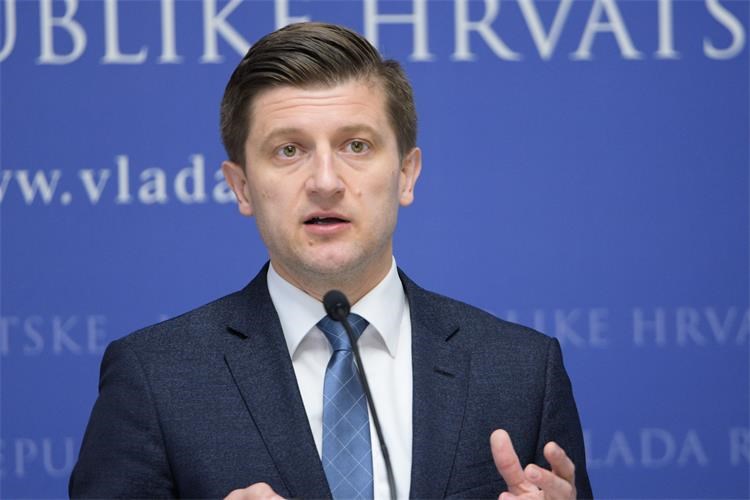- Published: 06.05.2021.
Marić: Recovery and Resilience Plan key to increasing potential growth rate
Finance Minister Zdravko Marić said on Thursday that the implementation of the National Recovery and Resilience Plan (NPOO) was crucial to increasing Croatia's potential growth rate.
On 29 April, the government adopted the HRK 49 billion Proposal for the National Recovery and Resilience Plan 2021–2026 and sent it for final consultations to the European Commission with the aim of finalising the document and ensuring its full consistency with the legal framework and the requirements of the Regulation establishing the Recovery and Resilience Facility, including green and digital targets.
The Croatian document, which was prepared in close cooperation with the Commission services, includes five components: Economy (HRK 26.2 billion), Public Administration, Justice and State Assets (HRK 4.36 billion), Education, Science and Research (HRK 7.5 billion), Labour Market and Social Protection (HRK 2.09 billion), and Health (HRK 2.56 billion), plus one initiative: Building Reconstruction with the planned amount of HRK 5.95 billion.
Marić told a news conference that currently the focus was on tapping HRK 6.3 billion in grants, whereas the core of the whole document is the implementation of reforms supported by public and private investments.
The 1,110-page document contains a description of 77 reforms and 152 investment projects.
Marić reiterated that with the effects of the NPOO, the national economy is set to rise at a rate of 5.2% in 2021, which is 0.3 percentage points more than its previous forecast. Economic activity is expected to pick up at a rate of 6.6% in 2022, 4.1% in 2023, and 3.4% in 2024, and expand by 2.7% in 2025.
Marić said that the reform of the education system was one of the pivotal points of the national recovery plan. As for state assets, the minister noted that the government holds an interest in a lot of companies.
Up to 13% of advance payment to be secured this year
Up to 13% of the total amount of the Croatia-bound allocations under the Recovery and Resilience Facility can be expected until the end of this year.
Transfer of those funds to Croatia will be enabled under a more simplified model in comparison to the criteria for tapping funds under the Multiannual Financial Perspective, according to Marić.
He underscored that two thirds of the envisaged amounts would go towards investment projects.
The minister stressed that the grants from the recovery facility would not be intended for getting out of any financial holes.
For instance, the measures in the Health component are not aimed at covering the current debts but transforming the healthcare sector into a sector that does not generate any liabilities, he explained.
Marić is against divisions between the private and the public sector when it comes to this instrument, noting that it is in everyone's interest that Croatia's NPOO is approved by the EC and that it can be implemented fully.
Croatia and the EC are expected to fine-tune the draft document in the next 10 days, after which the EC will assess the final official document and the European Council should approve it within four weeks of its adoption by the Commission.
Text: Hina
